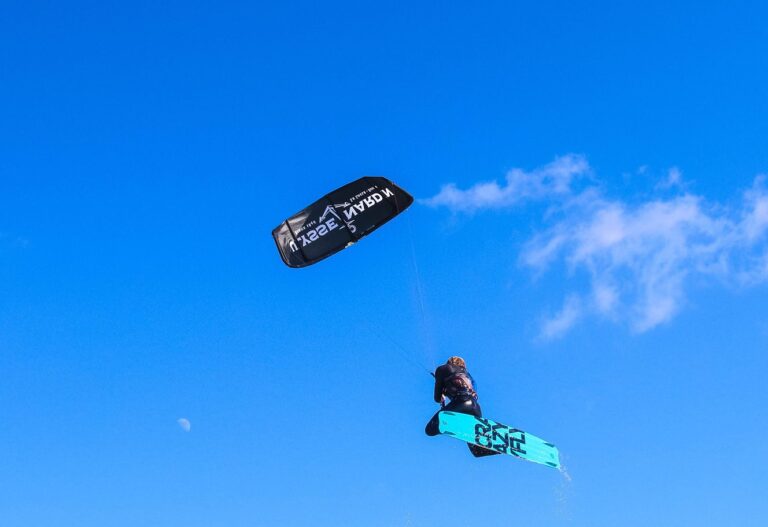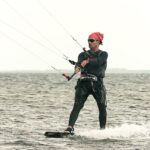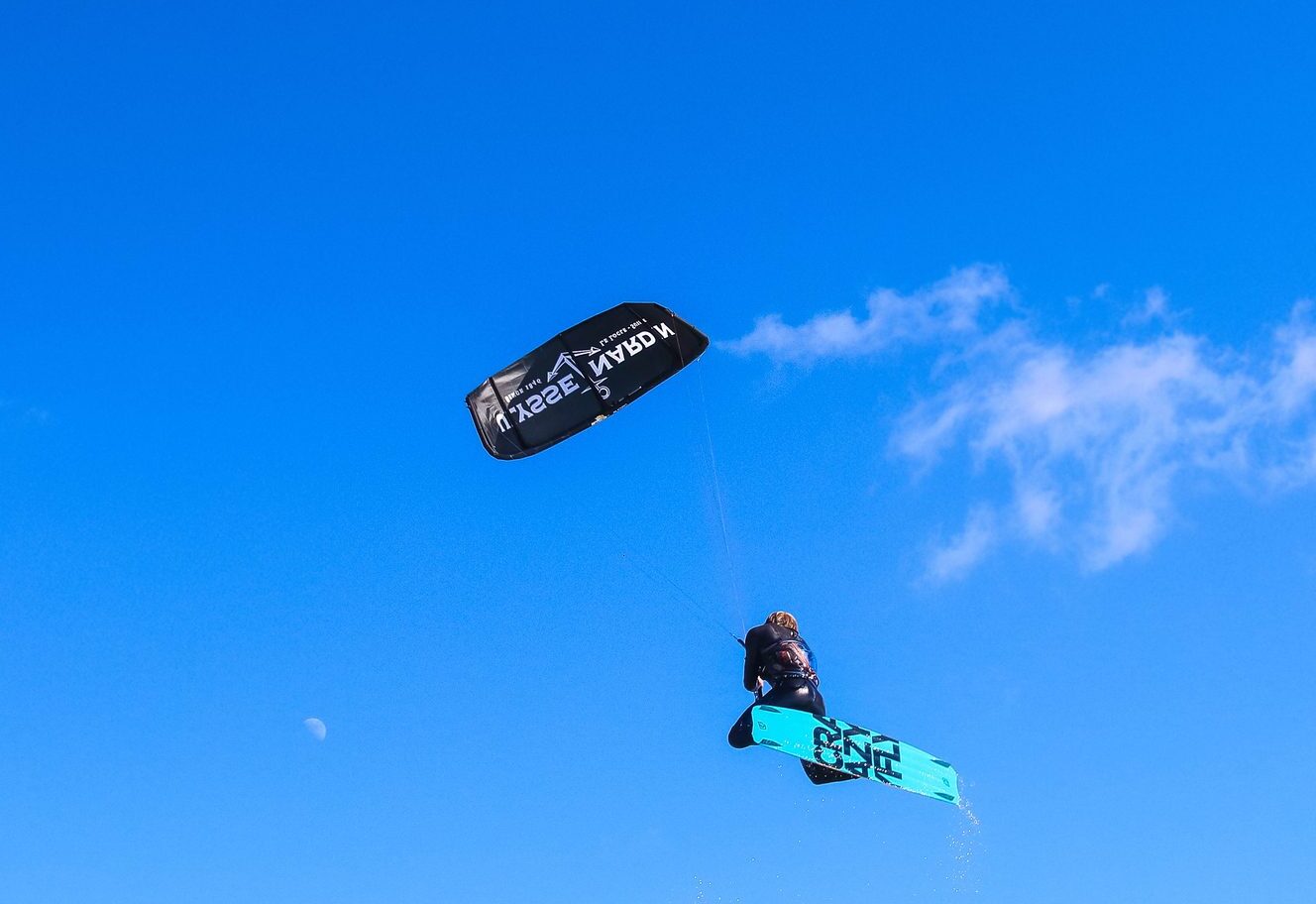How to Master the High Jump

Are you looking to master the high jump in kiteboarding? High jumping is a skill that requires both physical and mental strength. It is important to understand the technique, practice regularly, and use the right equipment. With the right approach, you can become a master of the high jump in kiteboarding. In this article, we will provide tips on how to master the high jump in kiteboarding, including the best techniques, equipment, and safety precautions. By following these steps, you can take your kiteboarding skills to the next level and become a master of the high jump.
Understand the Basics of Kiteboarding High Jump Technique
Kiteboarding high jump technique is an exciting and challenging way to take your kiteboarding skills to the next level. This technique involves launching yourself off the water with the power of the kite and performing a high jump. It is a thrilling experience that can be both physically and mentally demanding.
The key to a successful high jump is having the right kite setup and the right technique. When it comes to the kite setup, you need to make sure you have the right size kite for your weight and the right type of kite for the conditions. You also need to make sure your lines are the correct length and tension.
Once you have the right kite setup, you can start to focus on the technique. The most important thing to remember is to keep your body relaxed and in a neutral position. You should be standing with your feet shoulder-width apart and your arms outstretched. You should also keep your back straight and your head up.
When you are ready to launch, you need to pull the bar in towards your body and lean back slightly. This will create tension in the lines and the kite will start to move forward. As the kite moves forward, you need to start to move your body forward as well. You should be pushing off the water with your feet and arms and leaning your body forward. As you reach the apex of the jump, you need to keep your body in a neutral position and your arms outstretched.
When you reach the apex of the jump, you need to start to pull the bar in towards your body and lean back slightly. This will create tension in the lines and the kite will start to move backwards. As the kite moves backwards, you need to start to move your body backwards as well. You should be pushing off the water with your feet and arms and leaning your body backwards. As you reach the bottom of the jump, you need to keep your body in a neutral position and your arms outstretched.
Kiteboarding high jump technique is an exciting and challenging way to take your kiteboarding skills to the next level. With the right kite setup and the right technique, you can launch yourself off the water and perform a high jump. It is a thrilling experience that can be both physically and mentally demanding. With practice and dedication, you can master this technique and become a kiteboarding high jump master.
Develop Your Strength and Flexibility for Kiteboarding High Jumping
Kiteboarding high jumping is an exciting and thrilling activity that requires a combination of strength and flexibility. It involves jumping high off the water while using a kiteboard and harness to soar through the air. Developing your strength and flexibility is essential for successful kiteboarding high jumping.
Strength is key for kiteboarding high jumping. The stronger you are, the more power you will have to propel yourself off the water. This power is generated by the muscles in your legs, core, and arms. To increase your strength, focus on compound exercises such as squats, deadlifts, and bench presses. You can also add in exercises that target specific muscle groups, such as bicep curls and tricep extensions.
Flexibility is also important for kiteboarding high jumping. Having a flexible body will help you to move more freely and safely while in the air. Focus on stretching exercises that target the muscles in your legs, core, and arms. This will help to improve your range of motion and reduce the risk of injury. Examples of stretching exercises include hamstring stretches, quadriceps stretches, and chest stretches.
In addition to strength and flexibility, kiteboarding high jumping also requires balance and coordination. To improve your balance and coordination, practice drills that involve jumping and landing on one foot. This will help you to develop the necessary skills to stay upright while in the air.
Kiteboarding high jumping is an exhilarating activity that requires a combination of strength, flexibility, balance, and coordination. To become a successful kiteboarder, it is important to focus on developing your strength and flexibility. This will help you to increase your power and range of motion, as well as reduce the risk of injury. With practice and dedication, you can become a master of kiteboarding high jumping.
Learn How to Set Up Your Kite for Maximum Lift
Setting up your kite for maximum lift is an important part of kite flying. Properly setting up your kite will ensure that you get the most out of your kite flying experience. To get the most lift out of your kite, you will need to make sure that the kite is properly balanced and that the bridle is set up correctly.
The first step in setting up your kite for maximum lift is to make sure that the kite is properly balanced. To do this, you will need to adjust the kite’s center of gravity. This can be done by adjusting the length of the bridle or by adding weight to the kite. The goal is to make sure that the kite is evenly balanced so that it will fly straight and level.
Once the kite is balanced, the next step is to set up the bridle. The bridle is the line that connects the kite to the flying line. It is important to make sure that the bridle is set up correctly so that the kite will fly properly. The bridle should be adjusted so that the kite will fly at the correct angle. This angle should be between 10 and 20 degrees.
Once the bridle is set up correctly, the next step is to adjust the tension of the flying line. The tension of the flying line should be adjusted so that the kite will fly at the correct speed. The tension should be adjusted so that the kite will fly at a speed that is comfortable for you.
Finally, the last step in setting up your kite for maximum lift is to make sure that the kite is flying in the correct direction. The kite should be flying in the direction of the wind. This will ensure that the kite will have the most lift.
By following these steps, you will be able to set up your kite for maximum lift. Properly setting up your kite will ensure that you get the most out of your kite flying experience.
Practice the Timing and Mechanics of the High Jump
The high jump is a track and field event that requires a great deal of skill, strength, and technique. It is a complex event that requires athletes to combine power, speed, and timing to clear the bar.
The high jump begins with the approach. This is the most important part of the jump, as it sets the athlete up for success. The approach should be consistent and smooth, and the athlete should maintain a steady rhythm as they move towards the bar. The approach should be long enough to allow the athlete to build up speed, but not so long that they lose momentum.
Once the athlete reaches the bar, they must time their takeoff correctly. The takeoff should be explosive and powerful, and the athlete should drive their arms and legs forward to generate maximum power. The takeoff should be timed so that the athlete reaches the bar at the peak of their jump.
The next phase of the high jump is the flight. This is the most difficult part of the jump, as the athlete must maintain control and balance in the air. The athlete should focus on keeping their body upright and their arms and legs extended. They should also focus on driving their hips up and over the bar.
The final phase of the high jump is the landing. The athlete should land on both feet at the same time, and their knees should be slightly bent. The athlete should also focus on keeping their head up and their arms and legs extended.
Practicing the timing and mechanics of the high jump is essential for success. Athletes should practice their approach, takeoff, flight, and landing until they can consistently perform each phase with the correct timing and mechanics. With practice, athletes can develop the skill and technique necessary to clear the bar and become successful high jumpers.
Master the Landing and Safety Techniques for High Jumping in Kiteboarding
High jumping in kiteboarding is an exciting and exhilarating experience. It can also be a dangerous activity if not done correctly. Mastering the landing and safety techniques for high jumping in kiteboarding is essential for any kiteboarder who wants to take their skills to the next level.
The first step to mastering the landing and safety techniques for high jumping in kiteboarding is to understand the basics of kiteboarding. Knowing how to set up your kite, how to control it, and how to land safely are all essential skills for high jumping. It is also important to understand the different types of jumps and how to properly execute them. Once you have a good understanding of the basics, you can begin to practice the landing and safety techniques for high jumping.
When attempting a high jump, it is important to make sure that you have enough speed and power to reach the desired height. It is also important to ensure that you have the correct body position and technique for the jump. It is important to keep your body weight centered and to keep your arms and legs close to your body. This will help you maintain control and stability during the jump.
Once you have achieved the desired height, it is important to prepare for the landing. The key to a successful landing is to make sure that you are in the correct body position and that you are relaxed. It is also important to keep your arms and legs close to your body and to maintain control of the kite.
When landing, it is important to make sure that you land on both feet and that you land with your knees bent. This will help to absorb the impact of the landing and will help to prevent injury. It is also important to make sure that you land in a straight line and that you land with your arms and legs close to your body.
High jumping in kiteboarding can be a thrilling and rewarding experience. However, it is important to make sure that you are properly prepared and that you understand the landing and safety techniques for high jumping. With practice and dedication, you can master the landing and safety techniques for high jumping in kiteboarding and take your skills to the next level.
Mastering the high jump in kiteboarding is an exhilarating and rewarding experience. With the right equipment, practice, and technique, you can learn to jump higher and with more control. By understanding the fundamentals of kiteboarding, such as the wind window, body position, and edge control, you can improve your jumping ability and have more fun on the water. With practice and dedication, you can become a master of the high jump in kiteboarding.
Author
Latest entries
 WatersportsMay 10, 2023Qatar GKA Freestyle Kite World Cup, Fuwairit Kite Beach, Qatar: 31 January – 04 February – 2023
WatersportsMay 10, 2023Qatar GKA Freestyle Kite World Cup, Fuwairit Kite Beach, Qatar: 31 January – 04 February – 2023 WatersportsMarch 30, 2023Seven Navigation Tips That All Kite Surfers Should Know.
WatersportsMarch 30, 2023Seven Navigation Tips That All Kite Surfers Should Know. WatersportsMarch 30, 2023Why Safety First is the Most Important Aspect of Kitesurfing.
WatersportsMarch 30, 2023Why Safety First is the Most Important Aspect of Kitesurfing. WatersportsMarch 30, 2023Tips to Improve Your Body Drag Skills in Kitesurfing.
WatersportsMarch 30, 2023Tips to Improve Your Body Drag Skills in Kitesurfing.
